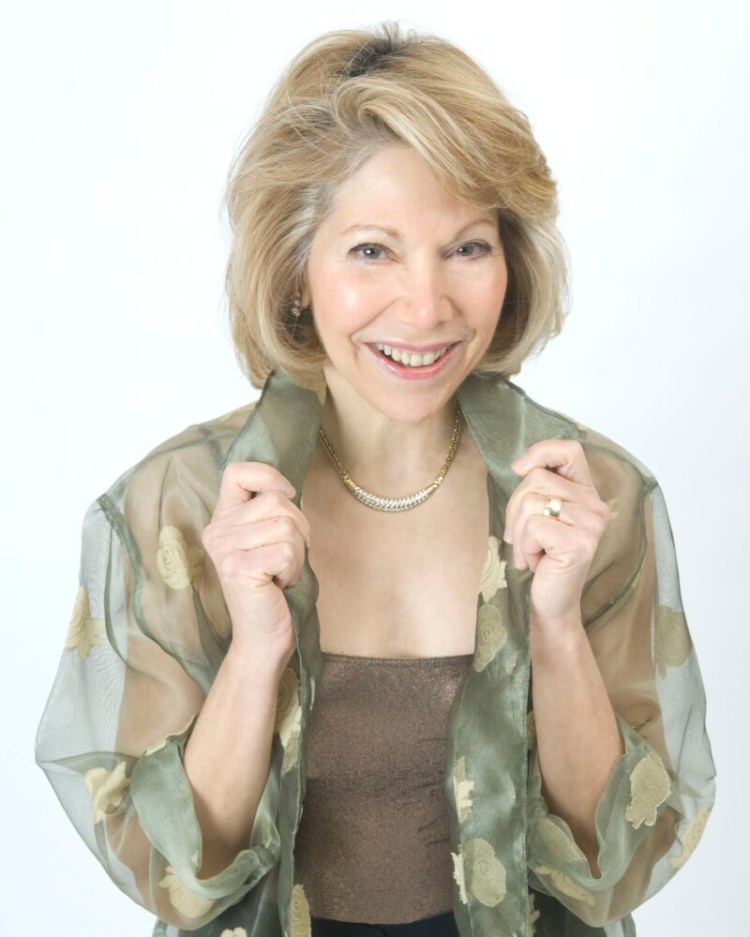Victoria Bond carved time out of her musical obligations in 2019 to visit the Art Institute of Chicago. She was there to conduct a concert, and wanted to see the painting “Blue and Green Music” by Georgia O’Keeffe. She had a commission from the Cassatt String Quartet, and knowing the quartet was inspired by the painter Mary Cassatt, Bond thought it would be appropriate to write music inspired by a visual artist.
She intended to select multiple paintings to write multiple movements for a single piece, but settled on a single painting by O’Keeffe.
“I was so taken by the painting — its many details, its many implications, it ambiguity — it spoke to me so directly, I decided, ‘I am going to write the whole piece based on this painting,'” she said in a phone interview. “I think the security guard got a little annoyed with me. I was standing there and sitting there, taking pictures and moving around, for about an hour, just absorbing it. There is a huge difference between the original and the reproductions. I wanted to be able to absorb the actual colors and textures and the vibrancy of the original artwork. As I looked at it, ideas started to come to me.”
Maine audiences will have multiple opportunities to hear the manifestation of Bond’s musical ideas when the Cassatt String Quartet performs the piece three times in the weeks ahead as part of the Seal Bay Music Festival. The Cassatt is the resident quartet of the festival, and will perform it on Vinalhaven on Aug. 16, in Belfast on Aug. 18 and in Portland on Aug. 19. In addition, the quartet will perform movements from the piece privately at retirement homes and other residences across the state, as it has done several times already this summer.
“This piece brings so much joy to people,” said Muneko Otani, first violinist of the Cassatt. “My job doesn’t pay much, but it’s the best job because it brings such happiness.”

The Cassatt String Quartet will perform Victoria Bond’s music several times in August as part of the Seal Bay Music Festival.
O’Keeffe made the painting around 1920, during a time when she experimented with oils to explore “the idea that music could be translated into something for the eye.” Her blue and green colors suggest the natural world, and her hard painted edges and soft, wavy lines of color evoke both a sense of sense of order and growing euphoria, simultaneous emotions consistent with music. With her piece, Bond is trying to do the opposite of O’Keeffe, by translating something for the eye into music.
The original inspiration was visual, but the musical composition is not a one-to-one relationship with the painting but an evocation of its themes, Bond said. “Georgia O’Keeffe said, ‘Because I cannot sing, I paint.’ With this painting, she set up two colors in dynamic with each other. I won’t say in opposition, but in dynamic. I wanted to set up that dynamic with two musical themes, so the whole piece is based on those themes,” she said.
Her musical themes stand in harmony and apart in four movements, titled “Blue and Green,” “Green,” “Blue” and “Dancing Colors.”
Bond has written operas (“Mrs. President” is among the notables), ballets and orchestral works. The New York City Opera, New York Philharmonic and American Ballet Theater are among the cultural institutions that have performed her music. She has been the principal guest conductor of Chamber Opera Chicago since 2005, and she founded the Cutting Edge Concerts New Music Festival in New York in 1988 and still serves as its artistic director.
The Cassatt String Quartet commissioned Bond to write the piece after receiving a Chamber Music America commissioning grant. This is her second piece for the quartet, which is based in New York. Otani described the music as “imaginative. We have commissioned a thousand new works in the last 30 years, and her work always stands out because of its rhythm, harmony and the colors of her sounds.”
Bond will attend the performances in Maine and talk about the music before the quartet performs it. “I believe, and they believe, it is very important to have the presence of the composer. If the composer is at all articulate, it offers a way into the work. People are hearing it for the first time. It’s a new language. It’s unfamiliar. Talking about it is a way of bridging the gap,” she said. “People are so used to hearing music written by composers who are no longer alive, and mostly men.”
Send questions/comments to the editors.




Success. Please wait for the page to reload. If the page does not reload within 5 seconds, please refresh the page.
Enter your email and password to access comments.
Hi, to comment on stories you must . This profile is in addition to your subscription and website login.
Already have a commenting profile? .
Invalid username/password.
Please check your email to confirm and complete your registration.
Only subscribers are eligible to post comments. Please subscribe or login first for digital access. Here’s why.
Use the form below to reset your password. When you've submitted your account email, we will send an email with a reset code.